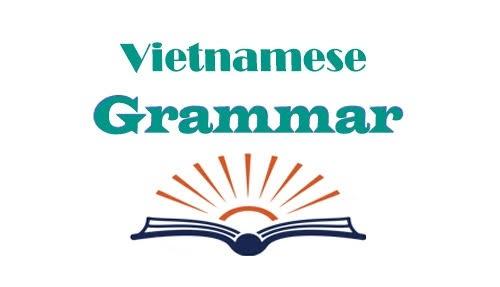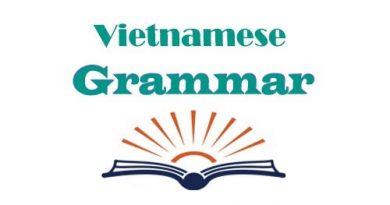How to use mà in Vietnamese – Vietnamese grammar
Hello everyone! In this post, we will introduce to you the lesson: How to use mà in Vietnamese – Vietnamese grammar.

Usage 1:
Position in sentence :
Is a conjunction.
Meaning and example :
Meaning: Expresses a reality contrary to the logical situation or to deny what has been suggested or supposed.
Note:
+ In this usage, in some cases, “mà” can be replaced by “nhưng” to express the opposite. However, “mà” expresses a reality contrary to the logical situation, while “nhưng” expresses a contrary relationship between cause and effect. The use of “mà” or “nhưng” depends on the speaker’s implication.
+ We can use the following forms: nhưng mà (places emphasis on a contrary relationship between cause and effect or expresses a relation of contrast), mà lại, vậy mà / thế mà
Example:
Cái áo đẹp thế này mà lại không thích à?
You don’t like such a beautiful shirt, do you?
Tôi đã khuyên hết lời mà anh ấy cũng không chịu nghe.
I gave him all the advice but he didn’t take them.
Quyển từ điển này rất hay nhưng mà chữ hơi nhỏ.
This dictionary is great, but the letters are a bit small.
Tớ mà lại không biết giải bài tập này à? Với mấy bài như thế này, chỉ cần vài phút là tớ đã giải xong rồi.
I don’t know how to solve this exercise? No way! I can solve such exercises within a few minutes.
Usage 2:
Position in sentence :
Is a conjunction.
Meaning and example :
Meaning: Indicates an additional quality, or an addition to what has been suggested or supposed.
Example:
Nhà hàng này ngon mà mắc quá!
The food in this restaurant is delicious but too expensive!
Quyển từ điển này hay mà tiện lợi quá!
This dictionary is good and very convenient!
Nữ ca sĩ ấy đã xinh đẹp mà lại hát hay nữa.
That female singer is beautiful and sing well.
Ngôi nhà này rộng mà đẹp quá! Tôi quyết định sẽ mua ngôi nhà này.
This house is big and so beautiful! I decided to buy this house.
Usage 3:
Position in sentence :
Is a conjunction.
Meaning and example :
Meaning: Used to give a suggestion, a request or a command in an informal and friendly way, or to show the purpose of an action.
Note:
+ We shouldn’t use “mà” to give a suggestion, request or command to a person of higher position.
+ When being used to show the purpose of an action, “mà” can be replaced by “để / để mà”.
Example:
Trời mưa rồi. Cậu có đi ra ngoài thì lấy cây dù của tớ mà dùng.
It’s raining. If you go outside, you can use my umbrella.
Tôi cố gắng làm việc để kiếm tiền mà nuôi các con.
I try to work hard to make money to feed my children.
Nếu đang vội thì lấy xe tôi mà đi.
If you’re in a hurry, take my car and drive it.
Cứ tự nhiên mà dùng đi nhé.
Feel free to use it.
Usage 4:
Position in sentence :
Is a conjunction.
Meaning and example :
Meaning: Expresses the result or consequence of an action or an event which has just been mentioned.
Note:
+ In this usage, in some cases, “mà” can be replaced by “nên” to express the result or consequence of an action or an event. However, “nên” generally expresses a typical result whereas “mà” is used to imply an explanation or justification, etc.
+ We can use the following forms: vì…mà…; do…mà…; tại…mà…; nhờ…mà…
Example:
Tại cậu mà mọi chuyện mới thành ra như thế này đấy.
It was because of you that things turned out this way.
Nhờ có Internet mà mọi người có thể tìm kiếm thông tin nhanh hơn.
Thanks to the Internet, people can find information faster.
Con bé đó khóc lên trông thấy mà ghét!
I hate seeing that girl crying!
Nghe nói mà tội nghiệp cho nó!
It is heart-rending to hear his story.
Vì được ba mẹ nuông chiều mà thằng bé ấy trở nên bướng bỉnh hơn.
Because of being pampered by his parents, that boy became more stubborn.
Usage 5:
Position in sentence :
Is a conjunction.
Meaning and example :
Meaning: Used to link a noun with a following clause to clarify or to modify that noun.
Note:
+ In this usage, “mà” can be omitted (optional).
+ We can use the following forms: may mà; khó mà; dễ gì mà; tha hồ mà; …mà…thì…(raises a hypothesis and the effect resulting from that hypothesis. This structure is often used to express an opinion, an ability, or a wish…)
Example:
Người mà đang mặc áo sơ mi trắng đằng kia là ai vậy?
Who is the person wearing a white shirt over there?
Nhiều vấn đề như thế này thì khó mà giải quyết hết được trong hôm nay.
It’s hard to solve such many problems today.
Cái thùng này đựng cái gì mà nặng thế?
What’s so heavy a thing in this box?
Ngày mai mà được nghỉ thì tốt biết mấy!
It will be good if I can have a day off tomorrow!
Usage 6:
Position in sentence :
Is a final particle.
Meaning and example :
Meaning: Used to put emphasis on an explanation, persuasion, affirmation or reproach.
Example:
Tôi đã cảnh báo cậu về điều đó rồi mà!
I have already warned you about it!
Cái này là của em mà!
This is mine!
Điều tớ nói hoàn toàn là thật mà! Cậu tin tớ đi.
What I said is absolutely true! Believe me.
Hôm nay là Chủ Nhật mà!
Today is Sunday!
A: Cô ấy hát hay quá nhỉ?
B: Thì người ta là ca sĩ mà!
A: She sings very well, doesn’t she?
B: Because she is a singer!
See other Vietnamese grammar structures in category : vietnamese grammar
We on social : Facebook
